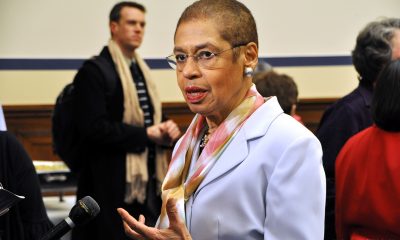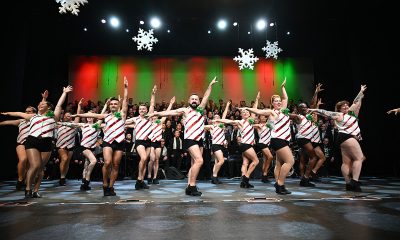Local
Police: Murder defendant lured victim by posing as gay
Grand jury could deem murder a hate crime
A gay D.C. resident was shot to death in his car by a 20-year-old District man he met on a telephone chat line and who posed as gay for the purpose of luring him to a location where he could rob him, according to a police affidavit.
The affidavit, which was discussed during a D.C. Superior Court hearing Wednesday, says Antwan Holcomb allegedly entered Anthony Perkins’ Lincoln Town Car after Perkins, 29, drove to a location the two arranged to meet through a conversation on the chat line.
Holcomb allegedly shot Perkins in the head Dec. 27 after he resisted Holcomb’s robbery attempt, says the affidavit.
Holcomb was overheard saying he “shot the ‘faggy’ in the head and robbed him of a pack of Newport cigarettes” before leaving the car and fleeing the scene on foot, the affidavit says. It says the pack of cigarettes appears to be the only item taken.
D.C. police charged Holcomb on March 12 with first-degree murder while armed in connection with Perkins’ death while he was being held at the D.C. jail on an unrelated charge of assault with intent to kill.
Court records show that the separate assault charge stems from a Dec. 12 incident in which Holcomb allegedly shot two people outside the Player’s Lounge, a popular Southeast nightclub and restaurant on Martin Luther King Jr. Avenue, S.E., that has hosted events organized by gay activists.
At Wednesday’s hearing, Judge Lee Satterfield found probable cause that Holcomb murdered Perkins and approved a motion by prosecutors that he be held without bond while awaiting trial. Holcomb has pleaded not guilty to the murder charge.
Assistant U.S. Attorney Michael Liebman, the lead prosecutor in the case, told DC Agenda after the hearing that the case would soon go before a grand jury. He said additional charges, including the possible classification of the murder as an anti-gay hate crime, could emerge in a grand jury indictment.
Gay activists and groups that monitor anti-gay violence often have referred to cases like the Perkins killing as gay pickup murders, noting that they usually stem from a gay man meeting someone at a gay bar or cruising spot who who seeks to intice the gay man into inviting him to his home, where the perpetrator intends to rob or harm him. In recent years, police and activists have said gay male victims have frequently met their attackers online.
D.C. police homicide detective Ray Shields testified at Wednesday’s hearing that investigators linked Holcomb to the Perkins murder after identifying several witnesses, including two who were at or near the scene at the time of the murder. He said the two witnesses near the scene, whom prosecutors have identified only was W-1 and W-2, knew Holcomb before the murder.
He said W-1 reported hearing a loud bang that sounded like a gunshot on the 2900 block of Fourth Street, S.E., and moments later observed a man he knew as Antwan walking quickly away from the area. Shields said the witness later identified the person he saw as Antwan Holcomb from a nine-picture police photo array.
The detective pointed to the affidavit’s account of the second witness, W-2, who told police he saw a man he knew as “Twon” leave a residence at 500 Lebaum St., S.E., and enter a gold-colored Lincoln Town Car in the early morning hours of Dec. 27. According to the affidavit, W-2 said that later in the morning he saw the man run back into the residence at 500 Lebaum St., S.E.
“Once he was inside, W-2 heard Twon describing a murder Twon had just committed,” says the affidavit. “W-2 advised that Twon stated that he got into a car and drove around with the ‘faggy’ and that Twon stated that, at some point later, he pulled out his gun at which time Twon and the ‘faggy’ got into a brief struggle.
“Twon then stated that he shot the ‘faggy’ in the head and robbed him of a pack of Newport cigarettes.”
Shields testified at the hearing that W-2 also was shown a nine-picture police photo array and “positively” identified Antwan Holcomb as Twon.
According to the affidavit, Holcomb admitted to homicide detectives that he met Perkins on a phone chat line and admitted to inviting the person to meet him outside of 500 Lebaum St., S.E. But he denied getting into that person’s car when the person arrived at the scene and denied shooting and robbing the person, says the affidavit.
“Mr. Holcomb stated that sometime between the late evening hours of [Dec. 26] and the early morning hours of [Dec. 27] he called a ‘chat line,’” says the affidavit. “He stated that he posed as a homosexual in an attempt to lure a victim to his location for the purpose of robbing him. He stated that he spoke to someone on the chat line and after several conversations convinced the subject to meet him in the area of 500 Lebaum St., S.E.
“Mr. Holcomb stated that later that same night the person he talked to on the chat line drove up to 500 Lebaum St., S.E. Mr. Holcomb stated that he did not get into the car with the person but another subject that looked like him, i.e., like Mr. Holcomb, did,” says the affidavit. “Mr. Holcomb denied shooting or robbing the person who drove up to 500 Lebaum St.”
The affidavit says police ballistic tests showed that the bullet recovered from Perkins’ head and a bullet recovered from one of the victims Holcomb allegedly shot outside the Player’s Lounge had been fired from the same gun.
A separate affidavit for the Player’s Lounge case says one of the people allegedly shot by Holcomb is paralyzed from the waist down and confined to a wheel chair as a result of the gunshot wound.
Holcomb’s defense attorney in the Perkins case, Ronald Horton, declined comment.
District of Columbia
Brian Footer suspends campaign for Ward 1 D.C. Council seat
Race’s third LGBTQ candidate cites family reasons for ‘stepping back’
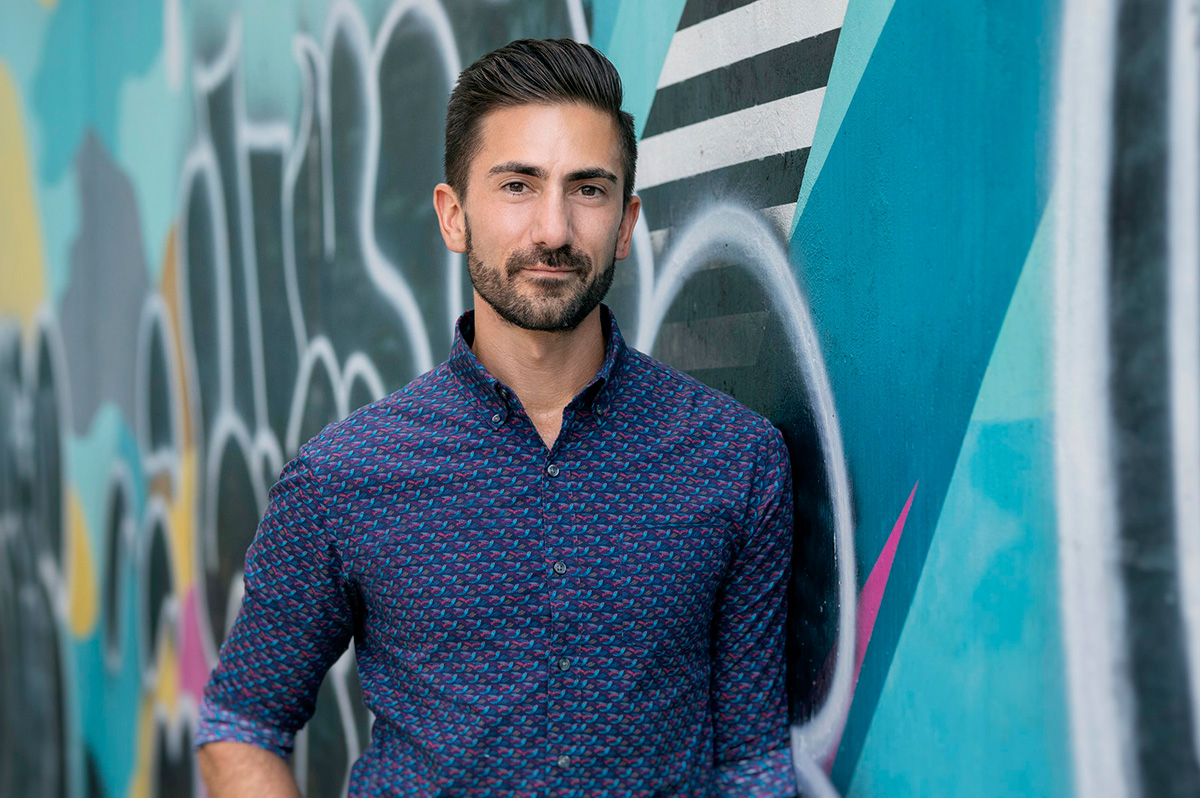
Gay Advisory Neighborhood Commissioner Brian Footer, who was one of three out LGBTQ candidates running for the open Ward 1 D.C. Council seat in the city’s June 16, 2026, Democratic primary, announced on Dec. 17 he has decided to “suspend” his campaign to focus on his family.
“After deep reflection and honest conversations with my family, I have decided to suspend my campaign for the D.C. Council,” he said in a statement. “This moment in my life requires me to be present with the people I love most and honor the responsibilities I carry both at home and in the community,” he states. “This was not an easy decision, but it is the right one for me and my family at this time.”
Footer, a longtime Ward 1 community activist and LGBTQ rights advocate, announced his candidacy for the Ward 1 Council seat in July, one month before bisexual Ward 1 community activist Aparna Raj announced her candidacy for the Council seat on Aug. 12.
Gay Ward 1 Advisory Neighborhood Commissioner Miguel Trindade Deramo announced his candidacy for the Ward 1 Council seat on Nov. 18, becoming the third out LGBTQ candidate in what appeared to be an unprecedented development for a race for a single D.C. Council seat.
At least three other candidates who are not LGBTQ are running for the Ward 1 Council seat. They include Ward 1 ANC member Rashida Brown, longtime Ward 1 community activist Terry Lynch, and Jackie Reyes-Yanes, the former director of the Mayor’s Office of Community Affairs.
In his statement announcing the suspension of his candidacy, Footer said he would continue to be involved in community affairs and advocate for the issues he discussed during his campaign.
“I want to be clear: I am stepping back from the race, not the work,” he says in his statement. “Public service has always been my calling. I will continue advocating for affordability, for safer streets, for stability for small businesses, and for a government that responds to people with urgency and respect,” he wrote. “And I will continue showing up as a partner in the work of building a stronger Ward 1.”
Footer concluded by thanking and praising his campaign supporters and calling his campaign suspension a “transition,” suggesting he is not likely to resume his candidacy.
His campaign press spokesperson did not immediately respond to a question from the Washington Blade asking if Footer might later resume his campaign or if his latest action was in effect an end to his candidacy.
“To everyone who knocked on doors, hosted conversations, donated, shared encouragement, and believed in this campaign, thank you,” he says in his statement. “I am deeply grateful for every person who helped this campaign take root,” he added. “This isn’t an ending, it’s a transition. And I’m excited for the work ahead, both in Ward 1 and at home with my family.”
Longtime gay D.C. Democratic Party activist Peter Rosenstein said in a statement to the Blade, “I respect Brian Footer’s decision to end his campaign for Council. It is not easy to run a campaign in D.C. and there are many others running in Ward 1.” He added, “While not living in Ward 1, I thank Brian for all he has done and clearly will continue to do for the people in the ward.”
Local
LGBTQ, LGBTQ-friendly congregations to hold holiday services
Bet Mishpachah’s Hanukkah service to take place on Friday
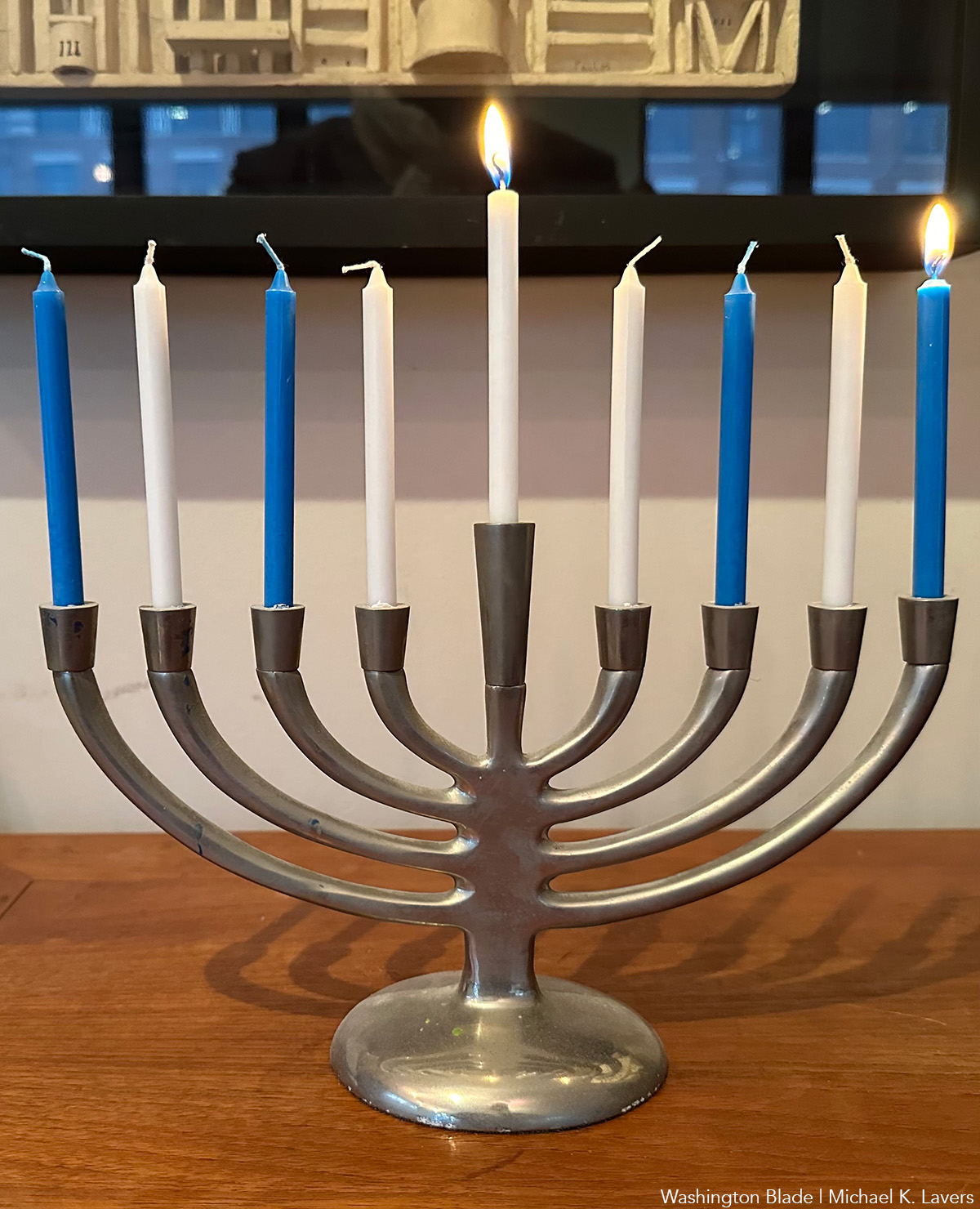
LGBTQ and LGBTQ-friendly congregations in D.C. will hold services and other events throughout the holiday season.
Bet Mishpachah on Friday will hold its Sparks in the Dark Happy Hour at Spark Social on 14th Street from 5:30-7:30 p.m. It’s Chanuka Shabbat Service will begin at the Edlavitch DC Jewish Community Center (1529 16th St., N.W.) at 8 p.m.
Hanukkah began on Sunday and will end on Dec. 22.
Two gunmen on Sunday killed 15 people and injured more than two dozen others when they opened fire at a Hanukkah celebration on Sydney’s Bondi Beach.
Jake Singer-Beilin, Bet Mishpachah’s chief rabbi, in a Facebook post mourned the victims.
“We grieve for the victims and send heartfelt prayers of healing for those who were wounded,” he wrote.
“This Chanuka, our lights will shine brightly in the darkness, but our hearts will be heavy with mourning for those who were murdered on Bondi Beach while observing what should have been a joyous day,” added Singer-Beilin. “We will still celebrate our Festival of Lights and we will commit ourselves to illuminating and repairing our broken world. Let us channel the bravery of the Maccabees who found hope where there seemed to be none, and who fought to create a better future. We must do the same.”
LGBTQ Catholic group to hold annual Christmas Day Mass
Dignity Washington’s Christmas Day Mass will take place at St. Margaret’s Episcopal Church (1820 Connecticut Ave., N.W.) on Dec. 25 from 6-7 p.m. Parishioners can attend in person or watch it online via Facebook.
The Metropolitan Community Church of Washington D.C.’s Christmas Eve service will take place at the church (474 Ridge St., N.W., on Dec. 24 at 6 p.m.
St. Thomas Episcopal Church (1517 18th St., N.W.) in Dupont Circle will hold its Christmas Eve Festival Eucharist from 5-6 p.m. A Christmas Eve dinner will take place in the Parish Hall from 6-8:30 p.m. The church’s Christmas Eve Festival Eucharist will occur on Dec. 25 from 10-11 a.m.
Washington National Cathedral throughout the holiday season has a number of services and events scheduled. These include the virtual Gospel Christmas Service on Dec. 21 from 6-7:30 p.m., the Family Christmas Service on Dec. 23 from 11 a.m. to noon, the Christmas Eve Festival Holy Eucharist on Dec. 24 from 10-11:45 p.m., and the Christmas Day Festival Holy Eucharist on Dec. 25 from 11:15 a.m. to 12:45 p.m.
The Foundry United Methodist Church (1500 16th St., N.W.) in Dupont Circle will hold its Christmas Eve Family Service on Dec. 24 at 4:30 p.m. Its Carols and Candlelight Service will take place at 8 p.m.
Smithsonian Anacostia Community Museum to celebrate Kwanzaa
The Smithsonian Anacostia Community Museum (1901 Fort Place S.E.) in Anacostia will mark the first day of Kwanzaa on Dec. 26 with storytelling and drumming with Mama Ayo and Baba Ras D from noon to 2 p.m. The museum will hold a series of other events through the 6-day celebration of African American culture that ends on Jan. 1.
The Creative Suitland Arts Center (4719 Silver Hill Road) in Suitland, Md., on Friday will hold their Almost Kwanzaa: A Creative Kind of Holiday event from 6-8:30 p.m.
Maryland
Joseline Peña-Melnyk elected Md. House speaker
Family immigrated to New York City from the Dominican Republic
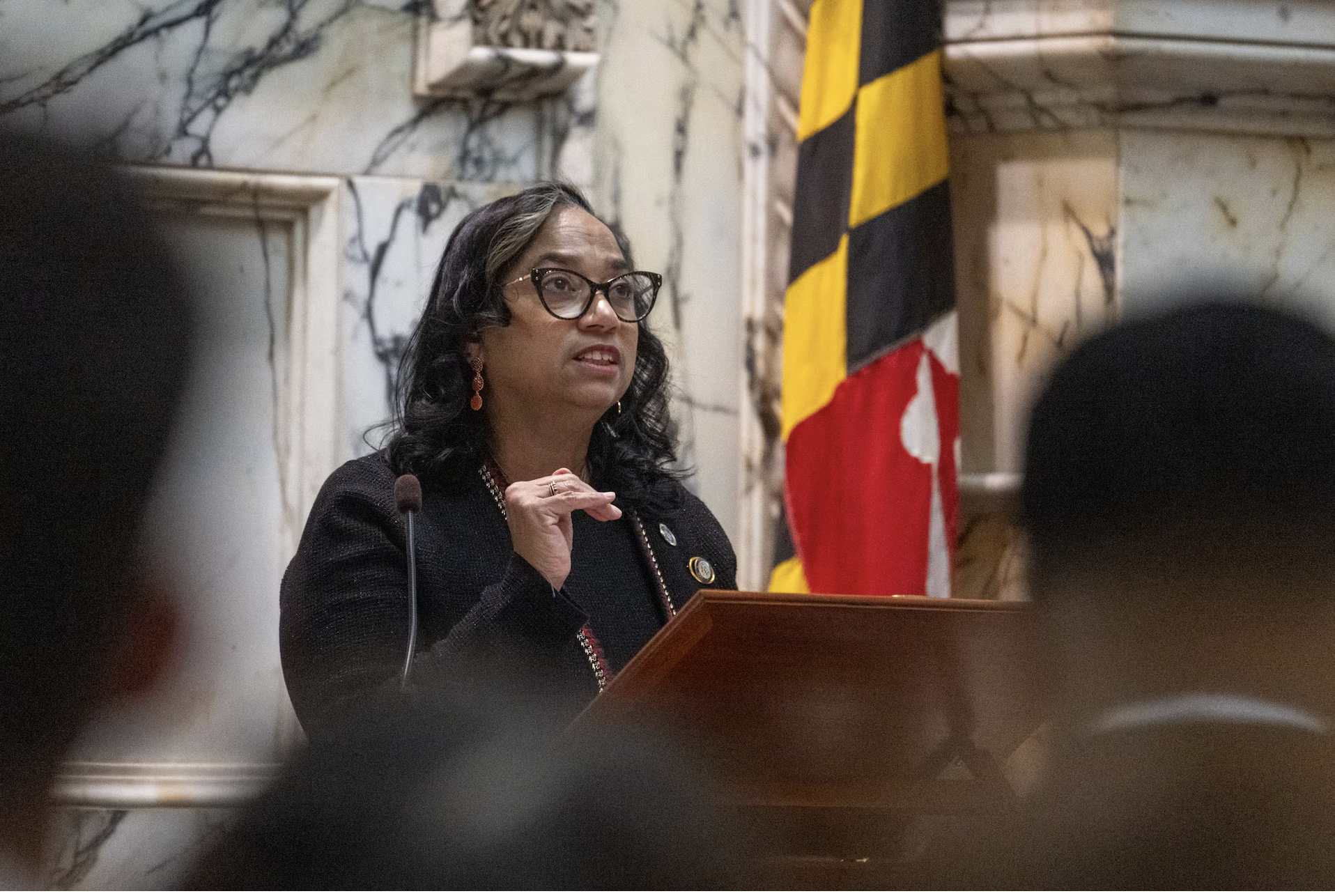
By PAMELA WOOD | Moments after being elected speaker of the Maryland House of Delegates Tuesday, state Del. Joseline Peña-Melnyk stood before the chamber and contemplated her unlikely journey to that moment.
Born in the Dominican Republic, the Peña family lived in a small wooden house with a leaky tin roof and no indoor plumbing. Some days, she said, there was no food to eat.
When she was 8 years old, the family immigrated to New York City, where Peña-Melnyk was dubbed “abogadito” or “little lawyer” for helping her mother and others by translating at social services offices.
The rest of this article can be read on the Baltimore Banner’s website.



